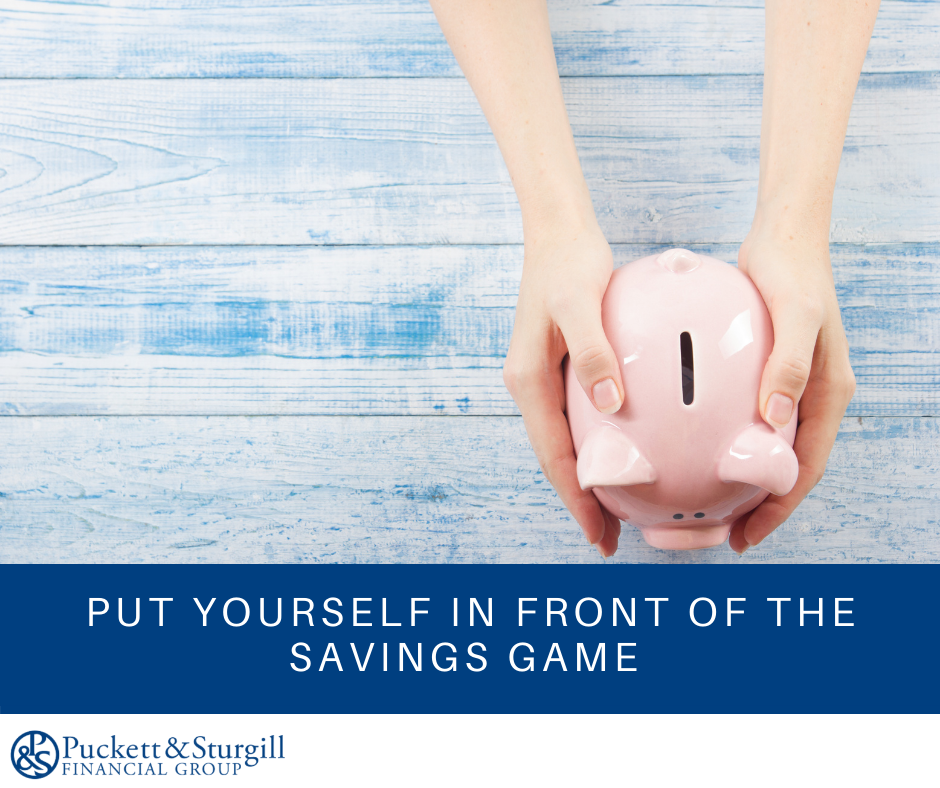Put Yourself in Front of the Savings Game

Like dieting, budgeting your expenses can benefit from long-term commitment. However, human nature leads many of us to become frustrated when we can’t immediately have the things we need or want. As a result, the best-laid budgeting plans can become ineffective. That’s why adopting a “pay yourself first” attitude can have a positive impact on your long-term budgeting, spending, and saving practices.
Following these simple steps can help you take control now and pave the way for a bright future:
1) Look closely at what you spend. Begin the process by recording all your expenses, such as rent or mortgage and utilities, services such as childcare, and necessities such as food, clothing, and medical expenses.
2) Include a line for “savings” with expenses. If you treat savings as an expense that must be made on a weekly or monthly basis, you might be more likely to set the money aside regularly.
3) Allocate income in terms of percentages. This exercise helps identify how each expense relates to your total income. Determine what percentage of your income goes to each expense, and then categorize them as either fixed (e.g., mortgage, utility bills, insurance premiums) or discretionary (e.g., dining out, travel, entertainment). You have discretion over the latter, but not the former. It is generally the discretionary expenses that erode earnings. Aim to trim these percentages wherever possible. It may be possible to make gains in savings by reducing many expenses by small percentages.
4) Prioritize. Take your list and rank your expenses as “important,” “moderately important,” or “unimportant.” Eliminate those items you can do without. You probably will have the most leeway with discretionary expenses. The savings you generate may be enough to begin a modest savings program. If it isn’t, move toward eliminating some of your moderately important expenditures to save even more.
5) Pay yourself first. Here’s the key to success—once you’ve ferreted out all the savings you can, write yourself a check for the amount you saved and “pay yourself first.” How you save the money depends on how much you have. For instance, if you begin with a few hundred dollars, you might put them into a savings account. If you’re planning for retirement, you could consider contributing regularly to an Individual Retirement Account (IRA). Or, better yet, in some circumstances, you can make even greater pre-tax contributions to an employer-sponsored retirement plan, such as a 401(k). Earnings in retirement savings vehicles generally accumulate on a tax-deferred basis.
Remember, putting yourself first means placing your future financial well-being at the top of your priority list. While it may be necessary to forgo purchasing some enjoyable, yet unneeded items, paying yourself first can become its own reward. The “dividends” that a disciplined savings program can ultimately pay back might outweigh the short-lived gratification received from current consumption.
Important Disclosures
The opinions voiced in this material are for general information only and are not intended to provide specific advice or recommendations for any individual security. To determine which investment(s) may be appropriate for you, consult your financial professional prior to investing.
This information is not intended to be a substitute for specific individualized tax advice. We suggest that you discuss your specific tax issues with a qualified tax advisor.
This article was published by Liberty Publishing, Inc.
LPL Tracking #1-05179437
PFBFRST2-X


